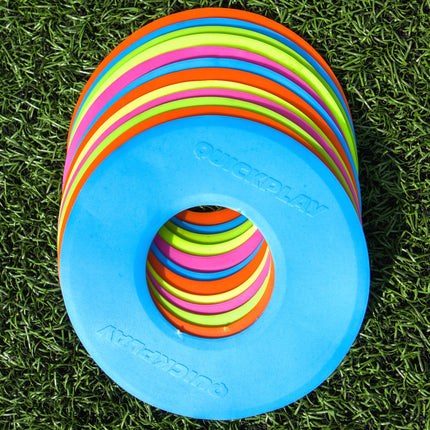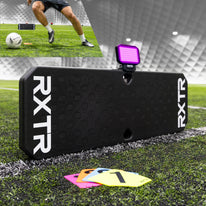In my 20+ years of coaching there is a consistent complaint that I hear from my athletes and their parents. This happens during this time of year when games are getting scheduled closer to each other, and this busy schedule does not allow the athlete adequate time to recover.
Here are a few tips to consider when trying to stay healthy during back-to-back soccer games:
- Stay hydrated: Drink plenty of water before, during, and after the games to stay hydrated and maintain optimal performance.
- You are what you eat: Fuel your body with healthy balanced meals rich in carbohydrates for energy, proteins for muscle repair, and healthy fats. Sorry, but the elite athletes do not eat fast food after games.
- Active recovery: Engage in light exercises, stretching, massage and breathing techniques to help your muscles recover between games.
- Get some sleep: Aim for 7-9 hours of quality sleep per night to ensure proper rest and recovery. I make my middle schoolers get 10 hours and my high schoolers get 8.
- Proper warm-up and cool-down: Perform dynamic warm-up exercises before each game and static stretching after to prevent injuries and promote muscle flexibility.
- Listen to your body: If you’re feeling overly fatigued or experiencing pain, it’s important to rest and prioritize recovery to prevent further injury. Be upfront with your coach if you feel like an injury may occur. Do not try and grind it out!
JUST BREATHE
Timing becomes very important when considering recovery. The moment a game, training or practice is finished you want to start the recovery and regeneration process immediately. One of the ways I have my athletes do this is with breathing techniques. This can be done on the way home from a practice or game.
One effective breathing technique that can help with recovery is called diaphragmatic breathing, also known as 3-dimensional breathing, or belly breathing. Here’s how I have my athletes practice it:
- After a game, find a comfortable and quiet place to sit, or lay down. Most of my athletes do it in the car or bus with their headphones on listening to chill music, not too loud and with a beat that is not too fast.
- Place some one hand on your chest and the other on your abdomen, just below your rib cage.
- Inhale deeply through your nose, allowing your abdomen to expand while keeping your chest relatively still.
- Exhale slowly through your mouth, gently pulling in your abdomen.
- Continue this deep breathing pattern for a few minutes, focusing on the rise and fall of your abdomen with each breath.
Diaphragmatic breathing can help activate your body’s relaxation response, lower stress levels, and improve oxygen delivery to your muscles, aiding in recovery. Practice breathing techniques regularly, especially after intense physical activity, to promote relaxation and recovery.
TRAINING & RECOVERY
As far as training goes, I recommend focusing on lower intensity training drills that don’t fatigue, your muscles too much. Incorporating soccer movement patterns using harnesses, hurdles, ladders and poles will continue to develop proficiency, even at lesser speeds and volume. In terms of recovery and repair, prioritize proper nutrition, hydration, sleep, and active recovery strategies, like foam rolling and ice baths. It’s also essential to listen to your body and adjust your training intensity and volume accordingly to prevent over training.
As I said before, starting the recovery process right away is super important as it will prolong your recovery. The ride home should be a recovery session and not just a ride home.
Apart from breathing, massage and recovery tools can be beneficial to aid in muscle recovery while driving in a car or airplane. Here are a few ways to incorporate them into your travel routine.
- Massage roller: use a portable massage roller to perform self-massage while traveling. Use a Foam Roller in the airport or at rest stops. This can help alleviate muscle tightness and improve circulation.
- Massage ball: bring a massage ball, golf ball or Lacrosse ball to target specific areas of tightness or discomfort, such as the feet, hips, glutes, or shoulders. Use it to apply pressure and release tension while seated.
- Compression gear: wear compression socks, or sleeves to improve circulation, and reduce swelling during long periods of sitting.
- Stretching: incorporate, gentle, stretching exercises while seated, or during, breaks to maintain flexibility and prevent stiffness.
- Hydration: stay hydrated by drinking plenty of water throughout your journey to support muscle recovery, and overall well-being.
While traveling, it’s essential to prioritize movement, hydration, and recovery strategies to minimize the negative effects of prolonged sitting and limited mobility. By incorporating these tips and tools into your travel routine, you can help support your body’s recovery and minimize the impact of travel related strain on your muscles.

With back-to-back games, and limited time to recover between, it is important that you do light workouts or a series of movements and exercises designed to prepare your body for your next game by increasing your heart rate, improving blood flow, enhancing mobility, and activating your soccer specific muscles. I recommend focusing on 4 categories: Movement Prep, Prehab & Strength, Cardio, and Regen per each session.
MOVEMENT PREP EXERCISES
| Hip Crossover | 10 each side |
| Achilles Stretch | 10 each side |
| Hamstring Stretch | 5 each side |
| Inch Worm | 5 |
| Reverse Lunge + Twist | 5 each side |
| Knee Hug to Lunge | 10 each side |
| Forward Lunge Elbow to Instep | 5 each side |
| Leg Cradle | 10 each side |
| Drop Lunge | 10 each side |
| Lateral Lunge | 10 each side |
| Linear Skip | 20 yards |
| Lateral Skip | 20 yards each side |
PREHAB & STRENGTH EXERCISES
| Single Leg Glute Bridge | 10 each side |
| 3 Way Lunge | 5 each side |
| Weighted RDL to Overhead Squat | 10 reps |
| Bridge | 30 sec |
| Plank | 1 min |
| Lateral Plank | 30 sec each side |
CARDIO EXERCISES
| Short Shuttle + 20 sec rest | 3 reps |
| Ladder + 20 sec rest | 10 reps |
| 300 yd Shuttle + 2 min rest | 2 reps |
REGENERATION & RECOVERY EXERCISES
| Aerobic Flush – jog, bike, walk etc | 10-15 mins |
| Self-Massage – stick, roller | 30 sec per muscle |
| 90-90 stretch | 1 min each side |
| Sidelying Quad / Hip Flexor Stretch | 1 min each side |
| Bent Knee hamstring Stretch | 1 min each side |
| Rope Adductor Stretch | 1 min each side |
| Rope Abductor Stretch | 1 min each side |
| Butterfly Stretch | 1 min each side |
| Prone Glute Stretch | 1 min each side |
- Michael Cummings
www.coach-cummings.com
"Michael Cummings is a strength and conditioning coach in San Diego, CA. For more than 20 years he has coached Olympic and professional athletes to youth athletes. He is also a certified Rehabilitation Specialist and Brain Trainer. He is passionate about upgrading the performance of all athletes."







